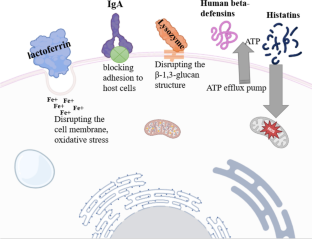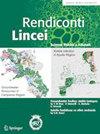人类分泌和排泄液、分子成分及其对真菌病原体白色念珠菌的生物治疗前景
IF 2.7
4区 综合性期刊
Q2 MULTIDISCIPLINARY SCIENCES
引用次数: 0
摘要
白色念珠菌是一种常见的真菌病原体,可引起一系列感染,从浅表粘膜感染到侵袭性全身感染,特别是在免疫系统受损的个体中。人类分泌物和排泄物的抗菌潜力是已知的;然而,对其抗真菌潜力的关注相对较少。因此,了解人类分泌和排泄液对人类真菌病原菌白色念珠菌的分子组成和抗真菌特性,对制定新的防治念珠菌病的策略以及加深我们对宿主与病原菌之间复杂相互作用的认识具有重要意义。在这篇综述中,我们讨论了在人类唾液、阴道液、耵聍和尿液中发现的潜在抗真菌分子。我们还讨论了汗液中发现的各种抗菌肽的潜在作用机制,如皮杀素和抗菌肽,以及它们作为真菌感染治疗药物的潜力。我们回顾了脑脊液、耵聍、泪液、sIgA、肠粘膜、牛奶、唾液、精液、汗液、尿液等中存在的抗念珠菌分子的信息,这些信息将在临床环境和未来的生物治疗抗真菌分子中非常有用。本文章由计算机程序翻译,如有差异,请以英文原文为准。

Human secretory and excretory fluids, molecular constituents, and their biotherapeutic perspective against fungal pathogen Candida albicans
Candida albicans is a common fungal pathogen that can cause a range of infections, from superficial mucosal infections to invasive systemic infections, particularly in individuals with immunocompromised systems. The antimicrobial potential of human secretory and excretory fluids is known; however, relatively less attention has been paid to their antifungal potential. Therefore, it is important to understand the molecular constituents and antifungal properties of human secretory and excretory fluids against human fungal pathogen C. albicans to develop new strategies for combating the disease Candidiasis and enhance our understanding of the complex interplay between the host and pathogen. In this review, we discuss the potential antifungal molecules found in human saliva, vaginal fluid, cerumen, and urine. We also discussed the potential mechanisms of action of various antimicrobial peptides found in sweat, such as dermcidin and cathelicidin, and their potential as therapeutic agents against fungal infections. We have reviewed the information on anti-candidal molecules present in cerebrospinal fluid, cerumen, lacrimal fluid, sIgA, intestinal mucous, milk, saliva, seminal fluid, sweat, urine, etc. that would be very useful in a clinical context and futuristic biotherapeutic antifungal molecules.
求助全文
通过发布文献求助,成功后即可免费获取论文全文。
去求助
来源期刊

Rendiconti Lincei-Scienze Fisiche E Naturali
MULTIDISCIPLINARY SCIENCES-
CiteScore
4.10
自引率
10.00%
发文量
70
审稿时长
>12 weeks
期刊介绍:
Rendiconti is the interdisciplinary scientific journal of the Accademia dei Lincei, the Italian National Academy, situated in Rome, which publishes original articles in the fi elds of geosciences, envi ronmental sciences, and biological and biomedi cal sciences. Particular interest is accorded to papers dealing with modern trends in the natural sciences, with interdisciplinary relationships and with the roots and historical development of these disciplines.
 求助内容:
求助内容: 应助结果提醒方式:
应助结果提醒方式:


